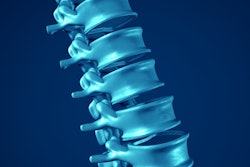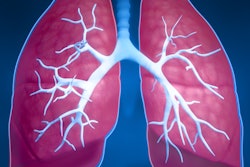Dear AuntMinnie Member,
Artificial intelligence (AI) dominated the headlines in the world of radiology this past week, with our coverage of several AI-themed research studies landing in our list of top 10 articles.
Topping the list was a story that may give some reassurance to radiologists concerned that AI might be taking their jobs in the near future. On the contrary, researchers from Massachusetts General Hospital (MGH) found that while a commercially available AI algorithm was helpful in assisting radiologists in interpreting routine chest x-rays, it wasn't ready to replace them entirely. Read more by clicking here.
Meanwhile, another highly read article addressed the use of AI to reduce false positives in screening mammography. And Canadian researchers used AI to analyze MRI scans and clinical data to predict whether an individual's cognitive decline would progress to Alzheimer's disease.
Finally, another intriguing article described DeepSpine, an AI algorithm developed at MGH and Brigham and Women's Hospital that's designed to perform several tasks related to grading spinal stenosis on lumbar spine MRI exams. Find out how it works by clicking here.
What's holding back CT lung screening?
CT lung cancer screening has been in the news again lately, but mostly because researchers are trying to figure out why uptake hasn't been faster in the U.S. It's an especially relevant question now that Europe appears poised to roll out population-based screening programs.
In a recent study, researchers from the Medical University of South Carolina found that more than 20% of U.S. veterans who had negative baseline screening exams did not come back for follow-up studies. It's a concern because most screening protocols call for two to three exams to be performed after the baseline study. Learn more by clicking here.
In good news, a study released October 8 predicts that lung cancer mortality will drop dramatically in the U.S. through 2065, mostly due to the success of tobacco-control efforts. But CT lung screening could also play a role, the researchers postulated.
#6StepsToRads tweetchat
Finally, if you know any medical students who are considering a career in radiology, be sure to point them to our latest 6 Steps to Radiology article. And be sure to have them log on to Twitter at 7 p.m. ET/4 p.m. PT on Wednesday, October 17, for our next tweetchat on interviewing for radiology residency. Use the hashtag #6StepsToRads.



















